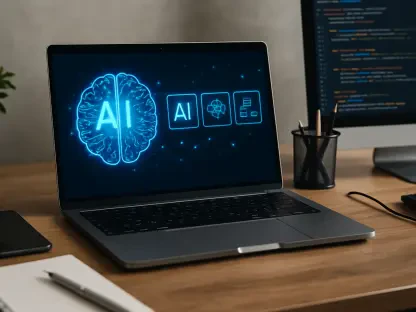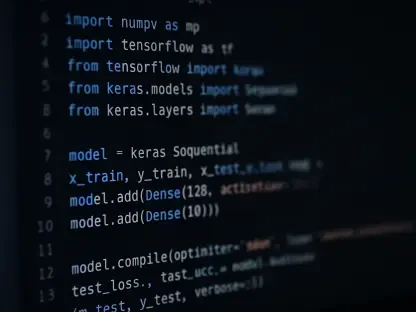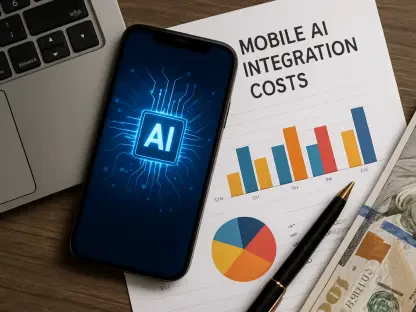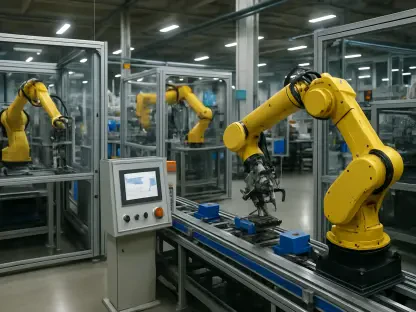In the fast-paced realm of software development, where efficiency and precision are paramount, a staggering 80% of new developers now adopt AI tools within their first week on the job, underscoring a seismic shift in how coding and DevOps are approached in 2025. This statistic highlights how artificial intelligence (AI) is becoming an integral part of the software development lifecycle (SDLC). At the forefront of this transformation stands a pioneering platform designed to manage AI agent workflows, promising to redefine developer productivity and workflow orchestration. This review dives deep into the capabilities, implications, and challenges of this innovative tool, exploring how it addresses the growing demand for intelligent automation in modern software engineering.
Core Features and Functionalities
Centralized Hub for AI Agent Management
This platform introduces a mission control tool that serves as a centralized hub for managing AI agents across various tasks. Developers can oversee multiple agents, track performance metrics, and ensure alignment with project goals, a feature emphasized by industry leaders as critical for maintaining control in complex environments. This capability reduces cognitive overhead by providing a clear, unified interface for agent orchestration.
Beyond oversight, the hub supports integration with agents from both native and third-party providers such as Anthropic, OpenAI, and Google. This flexibility allows teams to customize their workflows by selecting specialized agents tailored to specific needs, enhancing adaptability in diverse development scenarios. The result is a streamlined process where efficiency takes center stage.
The significance of this centralization lies in its ability to transform fragmented AI interactions into a cohesive system. By offering visibility into agent performance and interactions, it empowers developers to make informed decisions, ensuring that AI contributions align with overarching project objectives.
Structured Planning with Enhanced Copilot Features
A standout feature is the plan mode integrated into the Copilot tool, enabling developers to craft detailed, step-by-step plans for application development. This mode prioritizes structured execution by enforcing granular controls, ensuring that every phase of a project adheres to predefined guidelines. Such precision proves invaluable for large-scale initiatives requiring meticulous coordination.
This planning functionality also facilitates better resource allocation and timeline management. Developers can anticipate potential bottlenecks and address them proactively, minimizing disruptions during implementation. The emphasis on foresight marks a departure from reactive coding practices, fostering a more deliberate approach to software creation.
For teams juggling multiple projects, this feature acts as a blueprint, guiding AI agents and human collaborators alike. It bridges the gap between abstract ideas and actionable tasks, ensuring that intent translates effectively into outcomes without unnecessary detours or rework.
Advanced Tools for Code Review and Integration
The platform further distinguishes itself with specialized tools for code review, leveraging tailored agents to scrutinize repositories for quality and consistency. Integration with semantic analysis tools enhances the depth of these reviews, identifying issues that might escape manual inspection. This automated scrutiny elevates code standards across projects.
Additional functionalities, such as branch controls for continuous integration and identity management tools, bolster workflow precision. The inclusion of one-click merge conflict resolution simplifies a traditionally tedious process, allowing developers to focus on innovation rather than troubleshooting. These tools collectively refine daily development tasks.
Such integrations underscore a commitment to seamless operations, reducing friction in collaborative environments. By automating repetitive or error-prone activities, the platform frees up mental bandwidth for strategic thinking, a critical asset in competitive tech landscapes.
Seamless Collaboration through Platform Integrations
Collaboration is another area where this tool excels, offering integrations with popular platforms like Slack and Linear. These connections ensure that communication remains fluid across distributed teams, enabling real-time updates and feedback loops. The result is a more cohesive DevOps environment where information flows effortlessly.
This interoperability extends beyond mere connectivity, embedding AI-driven insights directly into collaborative spaces. Teams can leverage agent outputs within familiar interfaces, minimizing the learning curve and accelerating adoption. Such design choices reflect an understanding of modern workplace dynamics.
The practical value of these integrations manifests in improved project management and team alignment. By bridging gaps between tools and workflows, the platform fosters a unified ecosystem where AI and human efforts converge to drive progress.
Industry Trends and Implications
The Rise of Agentic Workflows
A broader industry trend shaping this technology is the shift toward agentic workflows, where developers pivot from writing code line by line to defining intent and reviewing AI-generated outcomes. Experts from research groups note that this evolution transforms coding environments into intelligent hubs for managing specialized agents. This paradigm redefines the developer’s role as a strategist rather than a manual coder.
This transition aligns with the growing complexity of software projects, where scalability and speed are non-negotiable. By delegating routine tasks to AI agents, developers can focus on high-level design and problem-solving, unlocking new levels of productivity. The platform serves as a catalyst for this cultural shift.
Looking ahead, this trend is expected to deepen between 2025 and 2027, with agentic workflows becoming the norm rather than the exception. As tools like this one mature, they will likely set the standard for how AI and human expertise coexist in software engineering, reshaping skill sets and expectations.
Real-World Impact Across Development Sectors
In practical settings, the platform demonstrates versatility across various software development sectors, particularly in DevOps. Its ability to streamline SDLC processes—from planning to deployment—has proven transformative for teams aiming to accelerate delivery without compromising quality. Case studies reveal significant time savings in iterative cycles.
Unique applications emerge in managing multi-agent workflows for complex projects. For instance, orchestrating agents to handle distinct aspects of a microservices architecture showcases the tool’s capacity to juggle intricate dependencies. Such use cases highlight its adaptability to niche challenges.
The impact on team dynamics is equally noteworthy, as enhanced automation fosters collaboration and reduces burnout. By offloading repetitive tasks, the platform enables developers to engage with more rewarding aspects of their work, ultimately boosting morale and innovation.
Challenges in AI-Driven Development
Quality Concerns with AI-Generated Code
Despite its promise, integrating AI into DevOps is not without hurdles, particularly concerning the quality of AI-generated code. Often criticized as verbose or suboptimal, such output—sometimes dubbed “AI slop”—can negatively affect application performance and increase technical debt. These shortcomings pose risks to production environments.
Security vulnerabilities in AI-generated code further complicate adoption. Flaws in logic or structure may introduce exploitable gaps, a concern for organizations handling sensitive data. Addressing these issues requires rigorous validation processes, which can offset some of the efficiency gains AI offers.
Efforts to mitigate these challenges are underway, with platforms like this one aiming to refine agent outputs through iterative learning and developer oversight. Balancing speed with quality remains a critical focus, as industry leaders advocate for maintaining high standards amidst rapid innovation.
Navigating Performance and Technical Debt
Another challenge lies in managing the performance trade-offs associated with AI tools. While automation accelerates certain tasks, poorly optimized code can slow down applications, creating bottlenecks over time. This dynamic underscores the need for continuous monitoring and refinement of agent contributions.
Technical debt, exacerbated by rushed or unpolished AI outputs, presents a long-term risk to project sustainability. Developers must allocate resources to refactoring and cleanup, a process that can strain budgets and timelines. This tension highlights the importance of strategic AI deployment.
To address these issues, the platform incorporates features for tracking and optimizing agent performance. However, the onus remains on development teams to establish guardrails, ensuring that AI enhancements do not inadvertently undermine system integrity or long-term goals.
Final Thoughts and Future Directions
Reflecting on this comprehensive evaluation, the platform emerges as a transformative force in AI-driven DevOps, offering robust tools for agent management, planning, and collaboration. Its integration of advanced features tackles key pain points in the SDLC, while its alignment with agentic workflows signals a bold step toward the future of coding. Despite these strengths, challenges like code quality and performance trade-offs persist as areas of concern.
Moving forward, the focus shifts to actionable improvements, particularly in enhancing the precision of AI outputs through better training models and developer feedback loops. Organizations adopting this technology are encouraged to invest in complementary validation processes to mitigate risks associated with technical debt and security flaws. This balanced approach promises to maximize benefits while addressing inherent limitations.
As the industry continues to evolve, exploring hybrid models where AI and human expertise dynamically adapt to project needs offers a compelling path. Stakeholders are urged to monitor advancements in agentic tools over the coming years, ensuring that innovation remains grounded in quality and reliability. This strategic mindset paves the way for sustainable progress in software engineering.









